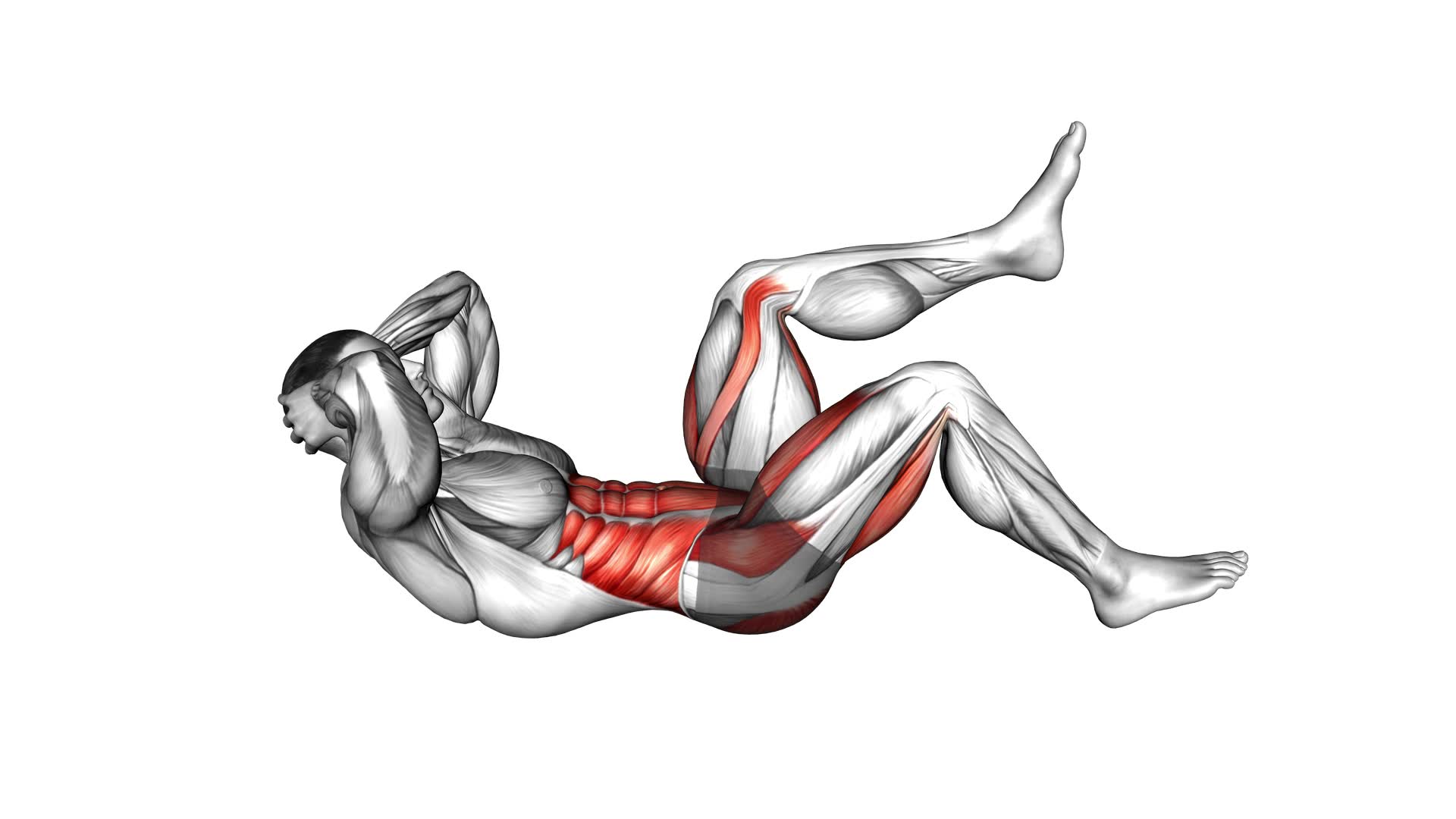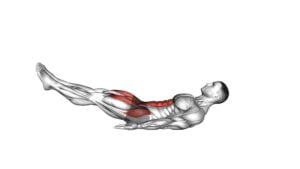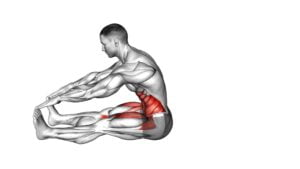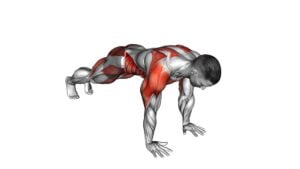Lying Single to Double Toe Tap (male) – Video Exercise Guide & Tips

Are you looking for a challenging exercise to strengthen your core? Look no further than the Lying Single to Double Toe Tap.
Watch This Exercise Video
In this video exercise guide, we'll show you the proper form and technique to perform this exercise effectively. You'll also learn about the benefits, common mistakes to avoid, and modifications for all fitness levels.
Get ready to maximize the effectiveness of your workout with this dynamic move. Let's dive in!
Key Takeaways
- Targets core muscles, specifically abdominals
- Works hip flexors and glutes
- Improves lower body strength and stability
- Enhances coordination and balance
Benefits of the Lying Single to Double Toe Tap
You can experience numerous benefits from incorporating the lying single to double toe tap into your exercise routine. One of the advantages of this exercise is that it targets your core muscles, specifically your abdominals. By engaging your core to stabilize your body while performing the toe taps, you can strengthen and tone your abs. Additionally, this exercise also works your hip flexors and glutes, helping to improve your overall lower body strength and stability.
Another advantage of the lying single to double toe tap is that it can help improve your coordination and balance. As you alternate between tapping one foot and then both feet, you're challenging your body's ability to stay balanced and in control. This can be especially beneficial for athletes or individuals who participate in activities that require agility and quick movements.
While there are many advantages to this exercise, it's important to note that there can also be disadvantages if not performed correctly. It's crucial to maintain proper form throughout the movement to avoid straining your lower back or putting unnecessary stress on your joints. It's recommended to start with a lighter weight or modify the exercise if needed to ensure proper technique and minimize the risk of injury.
Now that you understand the benefits of the lying single to double toe tap, let's move on to discussing the equipment needed for this exercise.
Equipment Needed for the Exercise
To successfully perform the Lying Single to Double Toe Tap exercise, there are a few essential pieces of exercise equipment that you'll need. These include:
- A yoga mat or exercise mat to provide cushioning and support for your body.
- A timer or stopwatch to track your exercise duration.
If you don't have access to these specific items, you can always improvise by using a towel or blanket as a makeshift mat and using a clock or smartphone timer instead.
Essential Exercise Equipment
One must have the necessary equipment for the lying single to double toe tap exercise. To perform this home workout, you'll need some affordable gear. Here are the essential exercise equipment needed for this exercise:
- Exercise mat: A comfortable and supportive mat is crucial for providing cushioning and stability during the exercise.
- Resistance band: This versatile piece of equipment adds resistance to your workout, helping to strengthen your muscles and improve flexibility.
- Stopwatch or timer: Using a stopwatch or timer will allow you to track your rest intervals and ensure you're performing the exercise with proper timing.
Having the right equipment is essential for an effective workout. However, if you don't have access to these items, don't worry. There are alternative options available that can help you achieve similar results without the need for costly equipment. Let's explore these alternatives in the next section.
Alternatives to Costly Equipment
If you can't afford the necessary equipment for the exercise, there are alternative options available. Don't worry, you can still perform the Lying Single to Double Toe Tap exercise at home without breaking the bank.
There are plenty of budget-friendly workouts that can help you achieve your fitness goals. For example, instead of using a weight bench, you can use a sturdy chair or even the edge of your bed. If you don't have dumbbells, you can use water bottles or canned goods as makeshift weights. The key is to be creative and resourceful with what you have available.
By finding alternatives to costly equipment, you can still engage in effective home exercises and stay on track with your fitness journey.
Now, let's move on to discussing the proper form and technique for this exercise.
Proper Form and Technique
To perform the Lying Single to Double Toe Tap exercise with proper form and technique, start by lying on your back and engaging your core muscles. Here are some tips to help you maintain proper form and get the most out of this exercise:
- Begin by extending your legs straight up towards the ceiling, keeping them together.
- Slowly lower one leg towards the floor, maintaining control and avoiding any sudden movements.
- As you tap your toe to the ground, focus on keeping your core engaged and your lower back pressed into the floor.
- Return the leg back to the starting position and repeat the movement with the opposite leg.
- Once you feel comfortable with the single toe tap, you can progress to the double toe tap by lowering both legs simultaneously.
- Remember to breathe throughout the exercise and maintain a steady pace.
By performing the Lying Single to Double Toe Tap exercise with proper form and technique, you can improve your balance and increase flexibility in your lower body.
Now, let's move on to the next section to learn about common mistakes to avoid and how to correct them.
Common Mistakes to Avoid
When performing the lying single to double toe tap exercise, there are a few common mistakes to avoid.
One mistake is improper foot placement, which can lead to ineffective engagement of the targeted muscles.
Another mistake is a lack of core engagement, which is essential for maintaining stability and maximizing the benefits of the exercise.
Improper Foot Placement
To avoid improper foot placement while performing the lying single to double toe tap exercise, ensure that you're consciously focusing on positioning your feet correctly throughout the movement. Proper foot position is crucial for maintaining balance and getting the most out of this exercise.
Here are some common mistakes to avoid:
- Placing your feet too far apart: Keep your feet hip-width apart to maintain stability and engage your core muscles effectively.
- Allowing your heels to lift off the ground: Keep your heels firmly planted on the floor throughout the exercise to maintain a solid base and prevent strain on your ankles.
- Pointing your toes outwards or inwards: Aim to keep your toes pointing straight ahead to ensure proper alignment and engage the correct muscle groups.
Lack of Core Engagement
To prevent a lack of core engagement during the lying single to double toe tap exercise, focus on contracting your abdominal muscles throughout the movement. Maintaining core strength is crucial for stability and proper form during this exercise.
By engaging your abdominal muscles, you create a solid foundation and support for your body, allowing you to execute the exercise with control and efficiency. Keep your core tight and actively pull your belly button towards your spine as you lift and lower your legs. This won't only help to prevent any strain on your lower back, but also maximize the effectiveness of the exercise in targeting your abdominal muscles.
Now, let's move on to modifications and progressions to further challenge your core strength.
Modifications and Progressions
Your modifications and progressions for the lying single to double toe tap exercise will help you increase the difficulty and intensity of the movement. Here are some modification variations and advanced progressions to challenge yourself and continue improving:
Modification Variations:
- Start with single toe taps: If you find it challenging to perform double toe taps, begin by practicing single toe taps. This will help you build strength and coordination before progressing to the more complex movement.
- Use a stability ball: Place a stability ball between your legs and squeeze it as you perform the exercise. This adds an extra challenge for your core muscles and requires greater stability.
- Elevate your legs: Lie on an inclined bench or place your legs on a step or platform to increase the difficulty. This modification variation engages your core muscles in a different way and adds an element of instability.
Advanced Progressions:
- Add resistance: Hold a dumbbell or a medicine ball between your feet while performing the exercise. This increases the resistance and demands more strength and control from your core muscles.
- Increase speed: Once you have mastered the movement, challenge yourself by performing the toe taps at a faster pace. This will require greater coordination and agility.
- Incorporate a twist: As you tap your toes, add a rotational movement by twisting your upper body from side to side. This adds an extra challenge for your oblique muscles and improves overall core stability.
Tips for Maximizing the Effectiveness of the Exercise
To increase the effectiveness of the lying single to double toe tap exercise, focus on maintaining proper form and engaging your core muscles throughout the movement. This will help maximize results and ensure you're getting the most out of this exercise.
First and foremost, it's important to maintain proper form throughout the exercise. Start by lying flat on your back with your legs extended and arms by your sides. As you lift your legs off the ground and tap your toes to the floor, be sure to keep your lower back pressed firmly into the mat. This will engage your core muscles and prevent any unnecessary strain on your back.
Engaging your core muscles is crucial for maximizing the effectiveness of this exercise. Focus on pulling your belly button in towards your spine, as if you're trying to flatten your lower back against the mat. This will help to stabilize your torso and increase the activation of your abdominal muscles.
Additionally, there are variations of the lying single to double toe tap exercise that can be done to accommodate different fitness levels. For beginners, you can start by bending your knees and tapping your toes to the floor, gradually working your way up to straight legs. For more advanced individuals, you can add ankle weights or increase the speed of the movement to further challenge your muscles.
Frequently Asked Questions
How Many Sets and Reps Should I Do for the Lying Single to Double Toe Tap Exercise?
When it comes to the lying single to double toe tap exercise, you may be wondering how many reps and sets you should do.
Well, the number of sets and reps will depend on your fitness level and goals. As a general guideline, you can start with 2-3 sets of 10-12 reps.
Remember to engage your core, keep your back flat on the ground, and perform the exercise in a controlled manner.
For a more personalized approach, consult with a fitness professional.
Can I Perform This Exercise if I Have Lower Back Pain?
If you're dealing with lower back pain, it's important to prioritize proper management and avoid exercises that may aggravate your condition.
While the lying single to double toe tap exercise may not be the best choice for you, there are alternative exercises that can help strengthen your core and improve flexibility without putting excessive strain on your lower back.
Consult with a healthcare professional to find the most suitable exercises for your specific needs and condition.
Is It Necessary to Warm up Before Doing the Lying Single to Double Toe Tap Exercise?
It's important to warm up before doing any exercise to prevent injury. Warming up helps increase blood flow to your muscles, making them more flexible and ready for movement. It also prepares your joints and ligaments for the stress of exercise.
If you have lower back pain, it's even more important to warm up properly. If you're unable to do the lying single to double toe tap exercise, there are alternative exercises that target similar muscle groups.
How Long Should I Rest Between Sets of the Lying Single to Double Toe Tap Exercise?
To ensure proper form and maximize the benefits of the lying single to double toe tap exercise, it's important to take adequate rest periods between sets. Resting for about 30 to 60 seconds allows your muscles to recover and prepare for the next set.
This rest time also helps prevent fatigue and maintain proper technique throughout the exercise. Remember, maintaining good form is crucial for getting the most out of this exercise and avoiding injury.
Can I Incorporate Weights or Resistance Bands to Make the Exercise More Challenging?
To make the lying single to double toe tap exercise more challenging, you can definitely incorporate weights or resistance bands. Adding weights will increase the resistance and make your muscles work harder. You can hold dumbbells or use ankle weights during the exercise.
Resistance bands can also be used by placing them around your ankles or thighs to add resistance and engage your muscles even more. These variations will help you take your workout to the next level.
Conclusion
In conclusion, the lying single to double toe tap is a beneficial exercise for strengthening the core muscles and improving balance.
By using proper form and technique, you can maximize the effectiveness of the exercise and avoid common mistakes.
With the right equipment and modifications, this exercise can be adapted to different fitness levels.
Remember to always consult with a professional before starting any new exercise routine.
Keep practicing and enjoy the benefits of this challenging yet rewarding exercise.

Author
Years ago, the spark of my life’s passion ignited in my mind the moment I stepped into the local gym for the first time. The inaugural bead of perspiration, the initial endeavor, the very first surge of endorphins, and a sense of pride that washed over me post-workout marked the beginning of my deep-seated interest in strength sports, fitness, and sports nutrition. This very curiosity blossomed rapidly into a profound fascination, propelling me to earn a Master’s degree in Physical Education from the Academy of Physical Education in Krakow, followed by a Sports Manager diploma from the Jagiellonian University. My journey of growth led me to gain more specialized qualifications, such as being a certified personal trainer with a focus on sports dietetics, a lifeguard, and an instructor for wellness and corrective gymnastics. Theoretical knowledge paired seamlessly with practical experience, reinforcing my belief that the transformation of individuals under my guidance was also a reflection of my personal growth. This belief holds true even today. Each day, I strive to push the boundaries and explore new realms. These realms gently elevate me to greater heights. The unique combination of passion for my field and the continuous quest for growth fuels my drive to break new ground.







